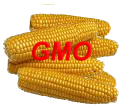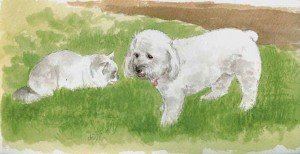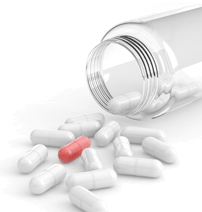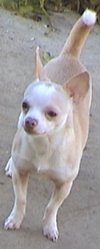31st May 2009
Animals Avoid Foods Containing Allergens
Mice that are allergic to ovalbumin (the main protein in egg white) avoid drinking solutions containing this antigen. A recent study confirmed this finding in laboratory rats. While non-immunized rats preferred sweetened drinking water that contained ovalbumin, immunized rats avoided it.
Edema formation and IgE-mediated mast cell degranulation (and consequent 5-HT(3) signaling) were found to be responsible for avoidance of the source of the allergen in allergic rats. The authors also showed that dexamethasone can block this taste aversion.
These findings suggest that animals are able to avoid foods that contain substances to which they are allergic. However, this instinctive gift is not useful if animals are given foods that don’t allow this natural avoidance behavior. At Onesta Organics, we believe that the best way to avoid food allergens is to exclude any potential allergen as an ingredient from prepared pet foods in the first place, and additionally to provide pets with food choices that allow them to select or reject particular foods.
Zarzana et al. Neuroimmunomodulation 2009;16(1):19-27
Mice that are allergic to ovalbumin (the main protein in egg white) avoid drinking solutions containing this antigen. A recent study confirmed this finding in laboratory rats. While non-immunized rats preferred sweetened drinking water that contained ovalbumin, immunized rats avoided it.
Edema formation and IgE-mediated mast cell degranulation (and consequent 5-HT(3) signaling) were found to be responsible for avoidance of the source of the allergen in allergic rats. The authors also showed that dexamethasone can block this taste aversion.
These findings suggest that animals are able to avoid foods that contain substances to which they are allergic. However, this instinctive gift is not useful if animals are given foods that don’t allow this natural avoidance behavior. At Onesta Organics, we believe that the best way to avoid food allergens is to exclude any potential allergen as an ingredient from prepared pet foods in the first place, and additionally to provide pets with food choices that allow them to select or reject particular foods.
Zarzana et al. Neuroimmunomodulation 2009;16(1):19-27
 Posted by admin under
Posted by admin under  Commercial Pet Foods
Commercial Pet Foods  No Comments »
No Comments »
 In humans, peanut allergy is the most common food-related cause of lethal anaphylaxis. Unlike many other food allergies, it often persists into adulthood. As well, peanuts are often used in dog treats. Well, you may say, peanuts can be allergens for humans, but can animals be allergic to them too? Yes, they can; read on…
In humans, peanut allergy is the most common food-related cause of lethal anaphylaxis. Unlike many other food allergies, it often persists into adulthood. As well, peanuts are often used in dog treats. Well, you may say, peanuts can be allergens for humans, but can animals be allergic to them too? Yes, they can; read on…
 A recent study indicates that a diet containing genetically modified or engineered (GM, GE) foods can impair reproduction in laboratory mice. Although it is has not yet been determined if this also applies to other species, the results of this study certainly suggest that it is safer to feed your pets foods that don’t contain GE ingredients. The safest way to do this is to choose certified organic pet foods, in which the use of GE ingredients are prohibited and their exclusion is verified by an unbiased third party.
A recent study indicates that a diet containing genetically modified or engineered (GM, GE) foods can impair reproduction in laboratory mice. Although it is has not yet been determined if this also applies to other species, the results of this study certainly suggest that it is safer to feed your pets foods that don’t contain GE ingredients. The safest way to do this is to choose certified organic pet foods, in which the use of GE ingredients are prohibited and their exclusion is verified by an unbiased third party. This pesticide is widely used in agriculture, residential landscaping, public recreation areas, and in public health pest control programs such as mosquito and fruit fly eradication. In the US, it is the most commonly used organophosphate insecticide and is also found in wetlands.
This pesticide is widely used in agriculture, residential landscaping, public recreation areas, and in public health pest control programs such as mosquito and fruit fly eradication. In the US, it is the most commonly used organophosphate insecticide and is also found in wetlands. 
 One cigarette contains 15 to 25 mg of nicotine, a cigar 15-40mg, a cigarette patch between 8-114mg. A cigarette butt contains 4-8 mg of nicotine, depending on its length and content in the original cigarette. Since smoking concentrates nicotine, cigarette butts contain relatively higher amounts of nicotine. Chewing tobacco contains between 6 and 8 mg of nicotine.
One cigarette contains 15 to 25 mg of nicotine, a cigar 15-40mg, a cigarette patch between 8-114mg. A cigarette butt contains 4-8 mg of nicotine, depending on its length and content in the original cigarette. Since smoking concentrates nicotine, cigarette butts contain relatively higher amounts of nicotine. Chewing tobacco contains between 6 and 8 mg of nicotine. Some animals do not show symptoms for hours after exposure to toxins. Therefore, it is best to bring your pet to a veterinarian if you saw or suspect that your pet ingested nicotine or was exposed to any other drug, even if you do not yet notice any symptoms. Always collect and bring along to your veterinarian all packaging or containers involved, as well as any material your pet may have chewed on or vomited. This additional information can be essential for the most effective treatment.
Some animals do not show symptoms for hours after exposure to toxins. Therefore, it is best to bring your pet to a veterinarian if you saw or suspect that your pet ingested nicotine or was exposed to any other drug, even if you do not yet notice any symptoms. Always collect and bring along to your veterinarian all packaging or containers involved, as well as any material your pet may have chewed on or vomited. This additional information can be essential for the most effective treatment.
 Nutro Products announced a voluntary recall of select varieties of NUTRO NATURAL CHOICE, COMPLETE CARE Dry Cat Foods and NUTRO MAX Cat Dry Foods with ‘Best if used by dates
Nutro Products announced a voluntary recall of select varieties of NUTRO NATURAL CHOICE, COMPLETE CARE Dry Cat Foods and NUTRO MAX Cat Dry Foods with ‘Best if used by dates